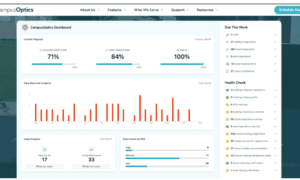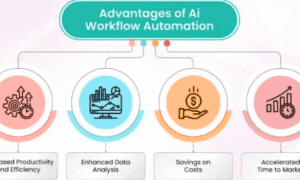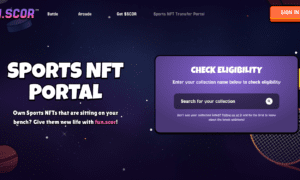ALT TEXT: A casual-dressed employee presenting Amazon PPC management sales metrics to a corporate team in a meeting setting.
If you think about Amazon PPC as a way to make money from ads, you’re already at a disadvantage. It’s a competitive field, but most sellers don’t realize it. Some lose money without knowing why, while others succeed without anyone noticing. The difference? They know how to control the process and don’t let it control them.
This isn’t just another guide full of generic tips. This blog is all about the hard truth of Amazon PPC management. If you want to stop wasting your money and start making a proper profit, pay attention.
What is Amazon PPC?
This is the process where sellers pay to have their ads shown on Amazon. You bid on keywords, Amazon shows your ad, and if someone clicks on it, you have to pay. It sounds simple, but it’s not.
Here’s what no one tells you: Amazon PPC is not about getting clicks, it’s about controlling who clicks.
- Good PPC makes sure the right people click and buy.
- Bad PPC attracts the wrong people, drains your budget, and wrecks your product ranking.
More traffic is not what you want. You want traffic that will result in sales. And that’s where Amazon Listing Optimization can help. If your listing is weak, even a strong PPC campaign won’t work. Amazon PPC Management won’t work if your listing isn’t well-optimized. Even if your ads attract visitors, they won’t turn into customers.
Amazon Ads Types (And When to Use Them Like a Pro)
Amazon offers three main PPC ad types. Most sellers use them wrong. Proper Amazon PPC management is key to using them effectively.
Here’s the real way to use them:
-
Sponsored Products (The Money Maker)
-
-
- Best for: Driving direct sales.
- When to use: Always. This is the core of PPC. Without it, you’re invisible.
- Best tip: Don’t just bid on high-traffic keywords. Find hidden gems. low-competition keywords with high conversion rates.
-
-
Sponsored Brands (The Authority Builder)
-
-
- Best for: Brand awareness & multiple-product promotion.
- When to use: If you have more than one product and want customers to trust your brand.
- Best tip: Send traffic to a custom Amazon Store, not a product page. This keeps customers focused on your brand, not competitors.
-
-
Sponsored Display (The Follow-Up Expert)
-
- Best for: Retargeting lost customers.
- When to use: If you have a high-traffic product that people view but don’t buy.
- Best tip: Amazon loves sellers who bring customers back. Retarget people who visited your listing but didn’t buy, these are your easiest sales.
The Hidden Formula: The 80/20 Rule of PPC
Most sellers throw money at ads without knowing which ads actually work. Stop.
- 80% of your results come from 20% of your keywords.
- 80% of your wasted spend comes from 20% of your mistakes.
How to fix this?
- Your winning keywords are the 20% that will generate most of your conversions. Maximize with them.
- Stop wasting money by cutting keywords that do not bring much ROI.
- Exact match for proven winners. Your ads will only show in front of searchers once someone writes this term as is.
- Use negative keywords. They will prevent any wasted spend on search terms.
The Most Overlooked Metric That Can Save You Thousands
Most sellers focus on ACoS (Advertising Cost of Sales). That’s a mistake.
Instead, track TACoS (Total Advertising Cost of Sales).
ACoS = Ad spend / Sales from ads
TACoS = Ad spend / Total sales (including organic sales)
Why does this matter?
- High ACoS but low TACoS? Your ads boost organic ranking. That’s good.
- Low ACoS but high TACoS? You’re relying too much on PPC. That’s bad.
- Both high? Your PPC strategy is bleeding money. Fix it.
If your TACoS keeps dropping over time, your ads are helping organic growth. That’s how you win long-term.
Amazon Listing Optimization Strategies
Even the best ads can’t fix a bad product listing. Follow these steps:
- Title Optimization: Front-load your most important keyword. Keep it short and powerful.
- Bullet Points: Focus on benefits, not features. Customers don’t care about your product. They care about what it does for them.
- Images & Videos: Use lifestyle images that show your product in action. People buy with their eyes.
- A+ Content: This isn’t decoration. Use it to tell a story that makes your brand feel premium.
Want PPC to actually work? Fix your listing first.
Why Most Sellers Fail at Amazon PPC Management (And How to Fix It)
1. They Set and Forget
Amazon PPC isn’t a crockpot. Check your campaigns daily. Adjust bids, kill bad keywords, and test new ones.
2. They Chase Clicks, Not Conversions
Clicks don’t pay bills, sales do. Focus on high-converting keywords, not just high-traffic ones.
3. They Don’t Manage Amazon PPC Like a Business
Every dollar in PPC should return profitable sales. If it doesn’t, manage Amazon better by optimizing your campaigns.
The Brutal Truth: You Can’t Outsmart Amazon, But You Can Outsmart Other Sellers
Amazon doesn’t care about you. It cares about sales. If your ads bring in money, they’ll reward you with better rankings. If they don’t, they’ll bury you.
Your job? Make Amazon money while making yourself even more.
- Optimize your listing before running ads.
- Use negative keywords to block wasteful clicks.
- Track TACoS, not just ACoS.
- Test, tweak, and never stop refining.
Most sellers will ignore this. That’s good news for you. Because while they waste money, you’ll be making it.
Conclusion
Amazon PPC Management is more of an art than shooting arrows in the dark. Winning is not based on being the highest spender, but the most astute one-spending according to the dynamics of the competition. Knowing when to go all out, when to get conservative, and when to allow Amazon’s algorithm to do the work is key.
Most sellers never stop hemorrhaging cash, chasing clicks, and praying for results. But businesses are built not on prayers but strategies.
Now you know what works; optimizing your listing, managing your Amazon PPC with intent, tracking the right metrics, cutting waste, and scaling what converts.
Ignore this, and you’ll keep paying Amazon to bury your products. Apply it, and you’ll turn PPC into a profit machine that fuels your entire brand.
The choice is yours.



































